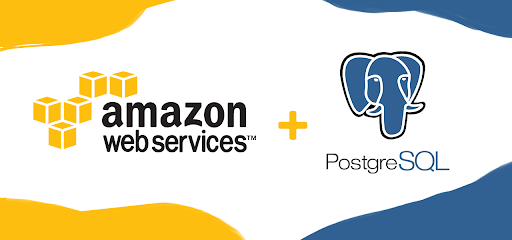
Statement statement = conn.createStatement() String db_database = prop.getProperty("db_database") Ĭonnection conn = DriverManager.getConnection(jdbc_url, db_username, db_password) String db_password = prop.getProperty("db_password") String db_username = prop.getProperty("db_username") String db_hostname = prop.getProperty("db_hostname") InputStream input = ().getResourceAsStream("db.properties") List DB InstanceĪfter creating the file, let's connect to RDS instance and create the table named jdbc_test: Properties prop = new Properties() We won't get the endpoint URL in the response as this call is asynchronous. RDS instance will be created in a few minutes. Now let's create our first instance by calling the createDBInstance(): amazonRDS.createDBInstance(request) The list is available hereĬreateDBInstanceRequest request = new CreateDBInstanceRequest() For Storage Type, specify an Amazon EBS volume type.DB name to create an initial database with the specified name.PostgreSQL or MySQL, we'll use PostgreSQL DB Instance class specify configuration for CPU, ECU, Memory, etc., from Instance Class Table.DB Instance Identifier that is unique across all existing instances names in Amazon RDS.

SSH into the EC2 instance and run the following commands. Provision a Postgres RDS instance in the private us-west-1b subnet. Ensure a public IP is assigned.Īssign the previously created security group. Provision an EC2 instance in the public us-west-1a subnet. Remove all outbound rules for the RDS security group. The default outbound rules should be fine.Ĭreate a security group for the Postgres RDS instance to be provisioned in the private us-west-1b subnet.Īuthorize inbound traffic from the public subnet over port 5432.


On the Route Tables tab of the VPC Dashboard, create a new route table.Īdd a route to the route table for the Internet gateway.Ĭreate a subnet in the us-west-1a availability zone.Ĭhange the route table for the previously created subnet from the main route table to the custom route table.Ĭreate a subnet in the us-west-1b availability zone.Ĭreate a security group for the EC2 instance to be provisioned in the public us-west-1a subnet.Īuthorize inbound SSH traffic from your local IP address. On the Internet Gateways tab of the VPC Dashboard, create a new Internet gateway.Īttach the gateway to the newly created VPC. Navigate to the VPC Dashboard in the AWS Management Console and create a new VPC.
#Aws postgresql rds connectivity install
Finally, we will SSH into the EC2 instance, install the Postgres client psql, create a table on the RDS instance, and install and set up an SSH tunnel. An EC2 instance will be provisioned in the public subnet with an attached security group that only allows inbound SSH traffic from your local IP and all outbound traffic. A Postgres RDS instance will be provisioned in the private subnet with an attached security group that only allows inbound traffic on port 5432 from the public subnet. The public subnet will have a custom route table that includes the local route as well as a route directing all other traffic over the Internet gateway. The VPC will have an Internet gateway attached, however the main route table will contain only a single local route that enables communication within the VPC. We will create a VPC with 2 subnets in the us-west-1 region 1 public subnet in the us-west-1a availability zone and 1 private subnet in the us-west-1b availability zone. The following diagram depicts what our final architecture will look like. This allows you to connect Chartio to a database in your private VPC subnet without modifying its route table or security groups. In this tutorial, we will walk through setting up an Amazon RDS instance inside a private VPC subnet and connecting to it using an SSH tunnel.Ī reverse SSH tunnel makes an outbound encrypted connection from within your VPC to Chartio’s servers.


 0 kommentar(er)
0 kommentar(er)
